What is Engineered Wood Flooring?
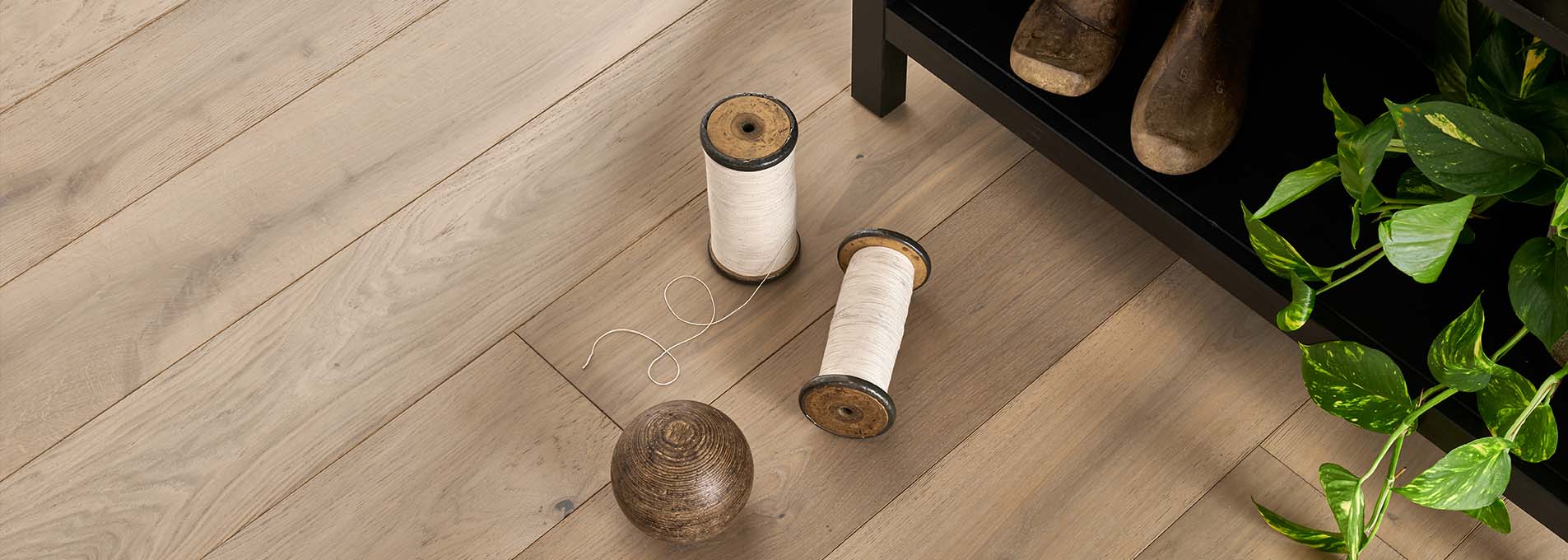
If you’re thinking of installing a wood floor in your home, then you may have already seen the term engineered wood flooring, or real wood engineered, whilst doing your research. But what exactly is engineered hardwood flooring and why is it such a great choice for your home?
In this post, we’ll take a look at everything you need to know about engineered wood floors including; what it is, the different types, room suitability, its lifespan, how to install it, and even how to care for your engineered wood floor once it’s been installed.
Overview:
- What is Engineered Flooring
- What are the Types of Engineered Floors
- Room Suitability
- How Long Does it Last
- How to Lay Engineered Flooring
- Care & Maintenance
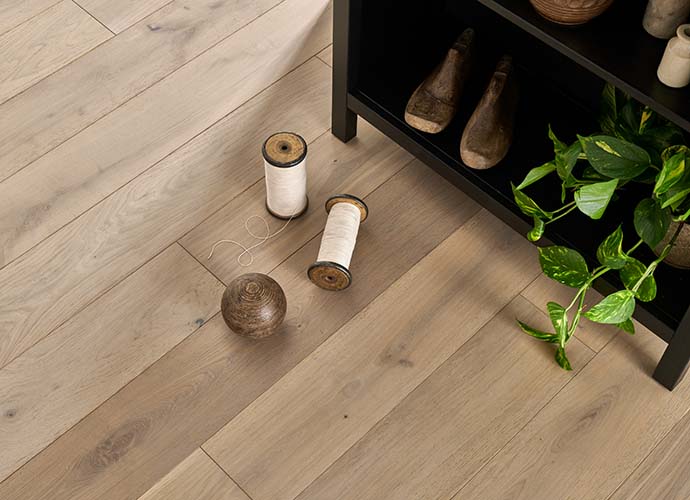
What is Engineered Flooring?
As the name suggests, engineered wood flooring is a manufactured form of wood flooring that has layers of different materials sandwiched (engineered) together.
But unlike laminate or wood-effect flooring, which has a printed top layer, engineered wood flooring has a top layer that is made of real wood – this is referred to as the wear layer. Engineered flooring generally has a wear layer of 2.5mm to 6mm, and the thicker the top layer the more times it can be sanded down, or ‘refinished’. This will extend the life of your floor, however, it may also increase the cost of the floor.
Below the wear layer, the cross-layer core provides the strength and stability that your flooring needs. Various materials can be used in the core layer but they are usually plywood or softwood. This inner core is what makes engineered flooring much more stable than solid wood flooring.
Finally, the engineered board is underpinned by a veneer layer for balance on the bottom of the board.

An engineered plank with a top layer of real wood (most commonly oak, but you can get walnut and even pine floors too) also helps the trees go further as you’re only using the natural wood for the visible wear layer instead of the entire thickness of the plank (which is what solid wood flooring is).
This engineered process minimises expansion, contraction, and warping which makes it much more durable than traditional solid wood flooring and means that it should last much longer than laminate or wood-effect flooring, too. However, this also means that engineered floors are generally more expensive than laminate, and sometimes even dearer than solid wood flooring.
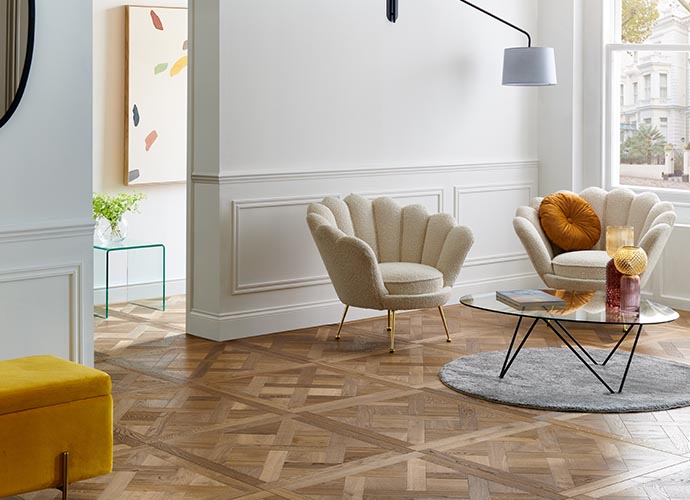
What Types of Engineered Wood Flooring are There?
Engineered floors are available in a range of board types, including traditional straight boards, herringbone planks, and Design Panels. They’re also available in a variety of finishes – typically either a lacquered or oiled finish, however, there are brushed & matt lacquered boards, and some which have a sawn finish for a textured feel.
A lacquered finish involves several layers of lacquer being applied to the hardwood top layer resulting in a smooth and glossy finish. This forms a hardwearing, protective barrier that will last for years but once the lacquer starts to look worn, it will need to be sanded off and reapplied.
An oiled finish gives a more natural look to your hardwood floor. Layers of oil are applied, allowing it to be absorbed into the wood to provide some protection from marks and dirt. This finish allows the wood’s beautiful texture to shine through but does require regular top-ups of oil to prevent the wood from drying out.
The finish and type will impact the overall look and feel of the floor, so it’s worthwhile comparing the differences to find the one that is right for you. Be sure to order samples of potential floors and visit a local showroom to discuss ideas with an expert to help you find the right floor for your requirements.

Room Suitability & Where can Engineered Flooring be Used?
Engineered wood floors have the beautiful natural look and feel of solid hardwood flooring but their advanced construction provides greater stability and versatility than traditional solid wood floors. This makes them a great choice for most areas of your home.
Generally speaking, lacquered floors are easier to look after than oiled engineered wood flooring and they will also resist spills slightly better than an oiled floor (however, as a rule of thumb you should always clean up any spills on your wood floors as soon as they happen). This makes them ideal for use in high-traffic areas such as your kitchen or dining room.
An oiled floor will show signs of wear sooner than a lacquered finish, which gives your floor a beautifully ‘lived in’ look. However, they’re more susceptible to spills which means that they may not be a good choice for your kitchen.
Fitting engineered wood flooring is not recommended in rooms with a high moisture environment or rooms that may have a high risk of water leaks, such as bathrooms or utility rooms. If you would like to get the look of real wood flooring in these rooms, we recommend our range of water-resistant floors as an alternative solution.
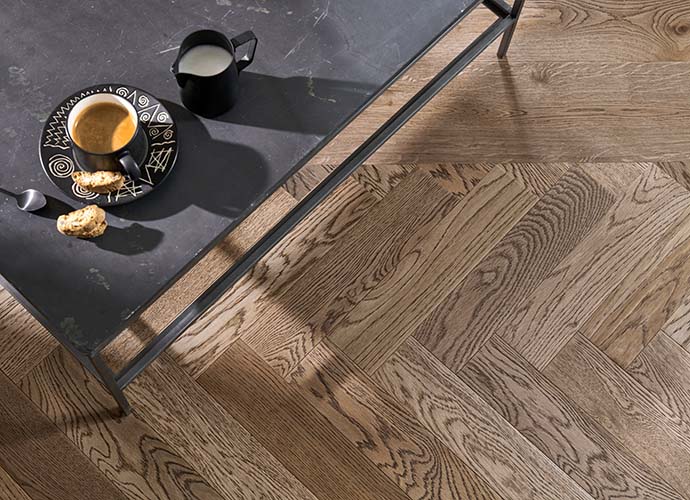
How Long Does Engineered Wood Flooring Last?
Most engineered floors have a lifespan of 30 years due to the tough construction of the cross-layered core. However, we’re proud to back our engineered floors with a 100-year guarantee as each tree is carefully grown for 100 years before being selected and crafted by experts to ensure it can endure more than a lifetime when properly cared for.
This lifespan means that choosing the right engineered floor is very important as it’s going to be a long-lasting feature in your home.
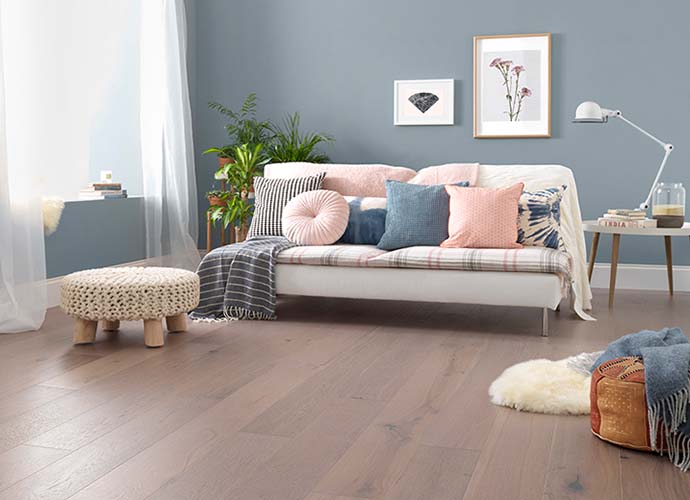
How to Lay Engineered Wood Flooring
The method of laying an engineered floor depends on the type of floor, the joint, and the subfloor requirements. This will impact the installation time, equipment, and cost.
However, because all engineered planks are made from natural materials which are susceptible to temperature, you should leave them to settle for at least two days before installing. This process is called acclimatising and allows the floor to adjust to the conditions in your home which will reduce the risk of movement once they’re fitted.
The most common engineered joint is tongue and groove, however, they can also have easiloc joints too (our Salcombe range has easiloc joints). Engineered floors can generally be laid as a floating floor (glued together at the joints), secret nailed (nailed through the tongue into a wooden subfloor), or glued (fully stuck down with adhesive – which is usually what’s required for underfloor heating, however, this is not always the case).
If you’re thinking of installing the floor yourself, make sure you’re familiar with the installation instructions and method before starting as it can vary for each type of engineered floor. You may wish to get an expert to install the floor for you, in which case we recommend finding someone who is experienced with your chosen floor, view our retailer map to find your local Woodpecker Trusted Partner.

Caring for Your Engineered Wood Flooring
Cleaning and maintaining engineered wood flooring is an important part of keeping it looking good for longer. You should sweep your floor regularly using a soft brush or a vacuum cleaner that is suitable for use on wooden floors.
Mop your floors regularly with a well-wrung mop to remove dirt, but be sure to remove excess water to prevent warping. And treat your engineered wood floor to a monthly deep clean using a specialist hardwood cleaning product.
You can also extend the life and good looks of your floor by taking some simple steps to avoid warping and protecting your floor against scratches.
If your home has underfloor heating, it’s a good idea to gradually increase the temperature over a few days after initial installation or after a long break. This will help your floor adjust.
Look after your floor with these simple care tips and your floor will repay you by looking good for years, and even decades, to come!
If you’d like more information about engineered hardwood flooring in your home, feel free to contact our friendly sales team to help answer any questions you may have.
Subscribe to our Inspiration Journal for monthly style, trends, and news updates, or follow us on Instagram to see gorgeous interiors right on your feed.
